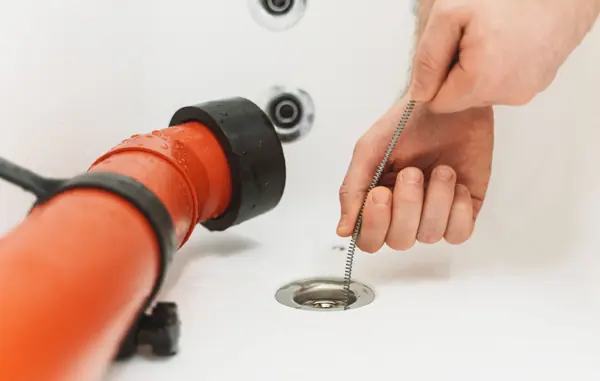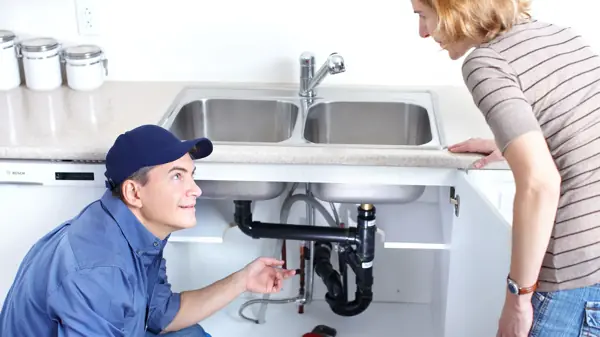We’ve all dealt with spring flooding, but when your lawn becomes a soggy mess that won’t drain, it’s more than just an inconvenience—it could be a sign of bigger trouble. A consistently saturated lawn is often the first clue that your drain field might be failing.
This is more than a seasonal problem; it’s a sign that your septic system isn’t working as it should. Instead of waiting for the problem to get worse, it’s important to address it before things get even messier.
How does spring flooding expose issues in residential drain fields?
Spring flooding can expose issues in residential drain fields by overwhelming the system’s capacity to absorb and filter wastewater properly. Here’s how this typically happens:
- Over-saturation of Soil: During spring floods, the ground becomes saturated with rainwater, leaving little room for additional water absorption. When a drain field is compromised, it struggles to process the wastewater from the septic system, leading to surface water pooling in the yard. This standing water indicates that the drain field is not functioning correctly.
- Clogged or Damaged Drain Field: Over time, drain fields can become clogged with solids, grease, or bacteria, making the soil less permeable. When spring flooding occurs, excess moisture exacerbates this issue, causing wastewater to back up to the surface instead of properly filtering and absorbing it by the soil.
- Visible Pooling or Puddling: One of the most obvious signs of a failing drain field during spring flooding is standing water or puddles on the lawn, often above the drain field. This indicates that wastewater is not being absorbed, which can lead to further system failure if not addressed.
Spring flooding often highlights problems in residential drain fields, such as clogging, poor absorption, or soil saturation, which can lead to more serious issues if not repaired or maintained.
What are the signs of a failing drain field during rainy seasons?
During rainy seasons, a failing drain field can become more noticeable as excess moisture and flooding highlight underlying issues. Here are some key signs that a drain field might be failing:
- Standing Water or Pooling: One of the most obvious signs is standing water or puddles on the lawn, particularly near the drain field. This indicates that wastewater is not being properly absorbed and is instead pooling on the surface.
- Saturated or Spongy Soil: If the ground above the drain field feels unusually soft, spongy, or wet even after the rain has stopped, it could mean that the drain field is not functioning properly and the soil is saturated with untreated wastewater.
- Foul Odors: A strong, unpleasant smell in the yard near the septic tank or drain field can indicate that wastewater is backing up and not being filtered properly. It could also signal that the drain field is clogged or that the soil can no longer absorb water.
- Slow Draining or Backups in Plumbing: If water drains slowly in sinks, bathtubs, or toilets, it could be a sign that the septic system is struggling to process the excess water due to a failing drain field. In more severe cases, there may be sewage backups inside the home.
- Lush or Unusually Green Grass: Sometimes, a failing drain field can cause the grass above it to grow unusually lush or green, as it’s being fertilized by untreated wastewater. However, this is often accompanied by a sour smell or sogginess in the soil.
During rainy seasons, standing water, saturated soil, foul odors, slow drainage, and unusual grass growth are signs of a failing drain field. These indicators should be addressed promptly to avoid further damage to the septic system and the property.
Can lawn saturation indicate hidden septic system problems?
Yes, lawn saturation can indicate hidden septic system problems, particularly related to a failing drain field. When the septic system’s drain field is not functioning properly, it can result in excess water pooling on the lawn, even in areas not typically prone to flooding. Here’s why:
- Improper Absorption of Wastewater: The drain field is responsible for filtering and dispersing wastewater into the soil. When the drain field becomes clogged, damaged, or overloaded, the wastewater isn’t absorbed properly, leading to saturation on the surface. This can cause the lawn to feel soggy, even after rainfall or flooding.
- Standing Water or Puddles: Saturation from the drain field can lead to visible pooling or puddling of water on the lawn, often in areas directly above the septic system. This can indicate that the soil cannot absorb the wastewater, indicating a system failure.
- Odor and Soil Quality Issues: Lawn saturation caused by untreated wastewater can result in foul odors, an unusual lushness of grass, or dying plants, indicating that waste is not being processed or filtered correctly. This can suggest a blocked or malfunctioning drain field.
Lawn saturation can strongly indicate septic system issues, especially if the drain field is struggling to process or absorb wastewater. If you notice persistent sogginess or pooling on your lawn, it’s important to have your septic system inspected.
Why does spring weather worsen existing drain field failures?
Spring weather can worsen existing drain field failures due to several factors related to increased moisture and soil conditions during the season. Here’s how:
- Excessive Rainfall: Spring often brings heavy rains and increased water flow, which can saturate the soil above the drain field. When the ground is wet, the drain field becomes overwhelmed and unable to absorb wastewater properly. This exacerbates existing problems, causing wastewater to pool on the surface or back into the home.
- Frozen Ground Thawing: In areas where temperatures drop during winter, the ground can freeze, preventing the drain field from properly absorbing water. When spring arrives and the ground thaws, the soil may still be compacted or unable to absorb the wastewater effectively, further straining the drain field.
- Soil Saturation: After months of cold and dryness, spring rains can saturate the ground, making it more difficult for the drain field to function. Even if the drain field had been functioning adequately, excessive moisture could have overwhelmed it, causing surface pooling and sluggish drainage.
- Increased Water Usage: As the weather warms, household water usage often increases. More showers, laundry, and lawn watering, combined with the added rainwater, can place additional stress on a failing or compromised drain field, making it harder to handle the excess water.
Spring weather worsens existing drain field failures due to heavy rainfall, thawing ground, and increased water usage, which can overwhelm a system struggling to process wastewater. If your drain field fails, these seasonal factors can amplify the problems.
Don’t Wait Until It’s Too Late—Get Your Drain Field Checked Today!
A flooded lawn in spring might look like a temporary inconvenience, but it could actually be a sign of something more serious—a failing drain field. It’s not just waterlogged grass; it’s your septic system sending you a warning. Ignoring the issue can lead to bigger, more expensive problems down the road. Catching it early can save you a lot of time, money, and frustration in the long run.
At Hi-Desert Plumbing, we specialize in diagnosing and fixing septic system issues before they turn into major headaches. If your lawn’s been drenched for days, give us a call and let us help you take care of it quickly and efficiently.




